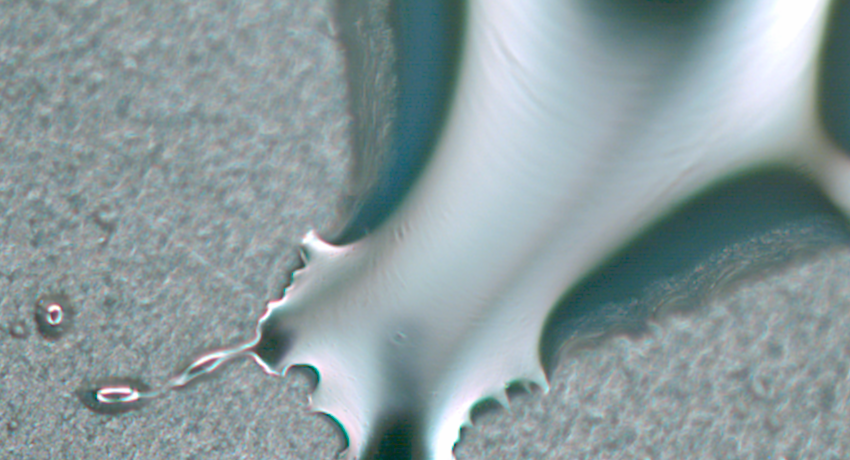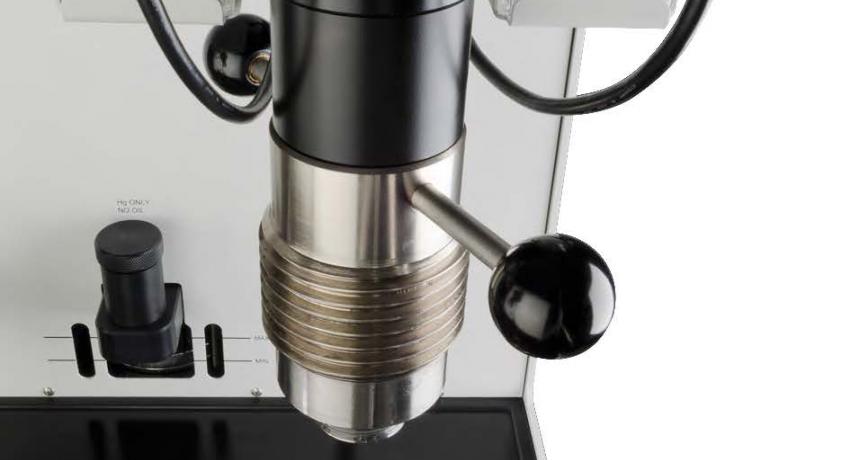Mercury porosimetry is used to measure the porosity of a material by applying controlled pressure to a sample immersed in mercury. External pressure is required for mercury to penetrate into the pores of a material due to high contact angle of mercury. The amount of pressure required to intrude into the pores is inversely proportional to the size of the pores. The larger the pore the smaller the pressure needed to penetrate into the pore. The mercury porosimeter generates volume and pore size distributions from the pressure versus intrusion data generated by the instrument using the Washburn equation.
Micromeritics AutoPore V Model 9620 Credit: Micromeritics
- Four low pressure ports.
- Two high pressure ports (60,000 psi).
- Pore structure analysis is more rapid by MIP than by gas adsorption.
- Measurements can occur in 30 to 60 minutes.
- Pore size diameters can be measured between 0.003 and 360 microns.
- Measurements include pore volume, pore area, material density and percent porosity.
- Sample size is dependent on porosity.
- Maximum size is a cylinder 2.5 cm in diameter by 2.5 cm long.
- The sample must be rigid enough to prevent collapsing in high pressure.
- Sample must fit in appropriate penetrometer.
- Ceramics, absorbents, catalysts, paper, medical implants, fuel cells, geosciences, filtration, medical implants, aerospace, electronics and construction materials.


